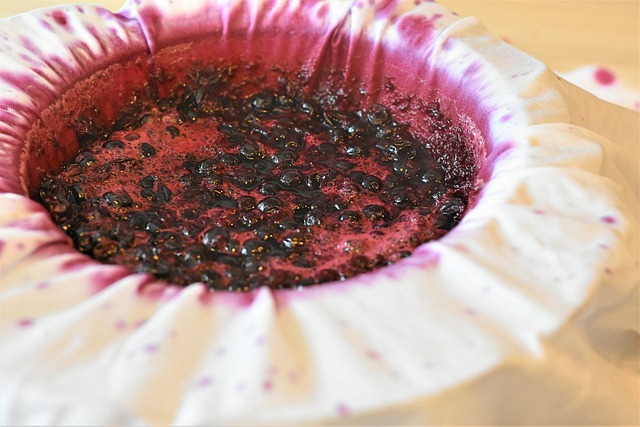Clogged drains disrupt daily life and require understanding for efficient management. Common causes include hair, grease, soap scum, or foreign objects forming deposits that narrow pipe interiors. DIY solutions like plungers, baking soda and vinegar mixes, or plumber's snakes effectively address clogs without professional help. Using a mixture of baking soda and vinegar creates a fizzing reaction that breaks down grease and debris, an eco-friendly alternative to harsh chemicals. For stubborn clogs, tools like plumber's snakes or drain brushes are recommended. Regular maintenance practices prevent clogs and reduce the need for costly professional Drain cleaning services.
Are you tired of dealing with stubborn, clogged drains? Understanding the causes and effects is the first step. This article equips you with the knowledge to tackle blocked pipes like a pro. From traditional plungers and plumber’s snakes to eco-friendly baking soda and vinegar solutions, we guide you through effective DIY techniques. Learn when it’s time to call in the experts and discover natural unclogging methods for long-term drain maintenance. Take control of your plumbing with our comprehensive guide!
- Understanding Clogged Drains: Common Causes and Effects
- Tools for the Job: Plungers, Snakes, and Natural Remedies
- DIY Drain Cleaning with Plunger Use: Step-by-Step Guide
- The Science Behind Baking Soda and Vinegar for Unclogging
- When to Call a Plumber: Signs Your Drain Needs Professional Help
- Natural Unclogging: Long-Term Solutions and Maintenance Tips
Understanding Clogged Drains: Common Causes and Effects

Clogged drains are a common household issue that can lead to significant disruptions in daily life. Understanding the root causes is essential for effective prevention and treatment. Typically, drain clogs result from a buildup of hair, grease, soap scum, or foreign objects like toys or utensils. Over time, these substances accumulate, forming hard-to-remove deposits that narrow the pipe’s interior, restricting water flow.
The effects of clogged drains are multifaceted. They can cause slow drainage, leading to overflows and potential damage to your home. Additionally, blocked pipes may foster the growth of mold and bacteria, posing health risks. Fortunately, there are DIY solutions like using a plunger, combining baking soda and vinegar for a natural unclogging agent, or employing a plumber’s snake to break up blockages without calling in a professional.
Tools for the Job: Plungers, Snakes, and Natural Remedies

When it comes to tackling a DIY clogged drain, having the right tools is essential. A plunger is a classic and effective solution, creating a seal around the drain to build pressure and dislodge obstructions. Plungers are particularly useful for smaller sinks and showers.
For more stubborn clogs, a plumber’s snake (also known as a drain auger) is a powerful tool. This flexible metal cable can be inserted into the drain and manipulated to break up or retrieve the blockage. For natural unclogging methods, a mixture of baking soda and vinegar is a popular choice. Pouring this down your drain can help dissolve hair and grease buildup, while also acting as a potent cleaning agent. These simple remedies offer cost-effective alternatives to calling a plumber for minor drain cleaning issues.
DIY Drain Cleaning with Plunger Use: Step-by-Step Guide

Unclogging your drains yourself can save you time and money, especially when it comes to minor blockages. One effective tool for the job is a plunger. Plungers use suction to dislodge hair, soap scum, and other debris that cause clogs. Before you begin, gather some common household items: a plunger, baking soda, vinegar, and possibly a plumber’s snake (a flexible metal cable) if the blockage is more severe.
Here’s a simple step-by-step guide for DIY drain cleaning using these natural unclogging methods:
1. Prepare Your Plunger: Fill your sink with enough water to cover the bottom, then place the plunger over the drain and ensure it creates a tight seal.
2. Baking Soda and Vinegar Mixture: Mix ½ cup of baking soda and ½ cup of white vinegar in the drain. This combination reacts to form carbon dioxide gas, creating a powerful cleaning force that can help break up clogs.
3. Plunge Away: After allowing the mixture to fizz for about 15 minutes, gently plunge up and down several times. Give it a rest, then repeat this process if the drain is still clogged.
4. Use a Plumber’s Snake (if necessary): If the clog persists, insert the snake into the drain and turn it clockwise to loosen or remove any debris caught further down the pipe.
The Science Behind Baking Soda and Vinegar for Unclogging

The age-old remedy of combining baking soda and vinegar for DIY clogged drains has a simple science behind it. When mixed, these two common household ingredients create a powerful fizzing reaction that can help break down and dissolve obstructions in your pipes. The baking soda acts as a base, neutralizing the acidity of the vinegar, while the vinegar’s acetic acid helps to soften and dissolve fatty buildup and mineral deposits. This natural unclogging method is an excellent alternative to using harsh chemicals or calling a plumber, especially for those who prefer eco-friendly solutions.
This DIY approach involves pouring baking soda down the drain followed by a mixture of white vinegar and warm water. The fizzing action helps to clear the pipe, and if the clog persists, using a plunger or a plumber’s snake can be the next effective step. This method is particularly useful for minor blockages and can save you time and money compared to professional services.
When to Call a Plumber: Signs Your Drain Needs Professional Help

If your DIY attempts to unclog a drain with methods like plunging, baking soda and vinegar mixtures, or natural unclogging solutions don’t work, it might be time to call in a plumber. There are signs that indicate your drain needs professional help rather than temporary fixes.
One clear sign is persistent clogs that return quickly after initial unclogging efforts. This could point to more serious issues like root intrusions, broken pipes, or other structural problems within the plumbing system. Another red flag is a slow drainage that results in water pooling up in sinks, tubs, or showers. It could be an indication of a partial clog or a larger blockage that requires advanced tools and techniques to resolve. Additionally, strange noises coming from drains, such as banging or grinding sounds, often signal issues with pipe connections or foreign objects stuck further down the line, necessitating a plumber’s expertise for safe removal.
Natural Unclogging: Long-Term Solutions and Maintenance Tips

Many homeowners turn to harsh chemicals or call a plumber when facing clogged drains, but there are effective, natural methods for unclogging pipes that can be easily accomplished with simple household items. One popular DIY solution involves using a combination of baking soda and vinegar. By mixing these two ingredients in your drain, you create a fizzing reaction that helps to break down grease and debris buildup. This method is eco-friendly and safe for septic systems, making it an attractive alternative to store-bought drain cleaners.
For more persistent clogs or difficult-to-reach areas, consider using a plumber’s snake (also known as a drain auger) or a drain brush. These tools can be inserted into the drain to break up larger debris and clear out any obstructions. Regular maintenance, such as regularly pouring hot water down the drain and using baking soda and vinegar as a natural cleaning agent, can also prevent clogs from forming in the first place. By adopting these long-term solutions, you may reduce the need for frequent drain cleaning and potentially save money on costly plumber visits.
